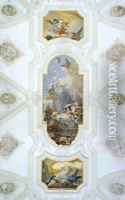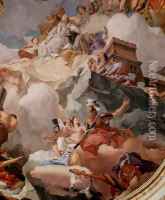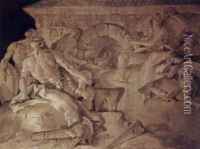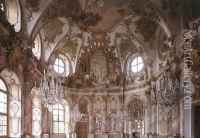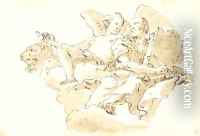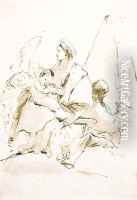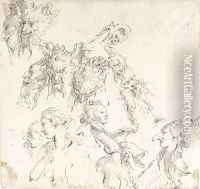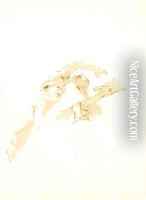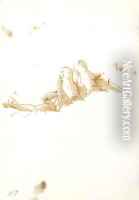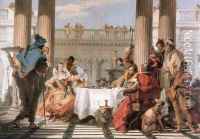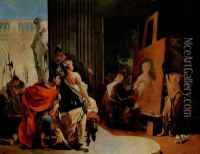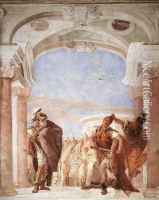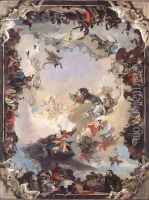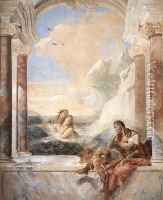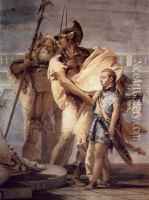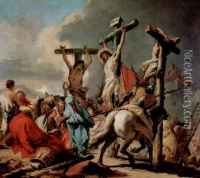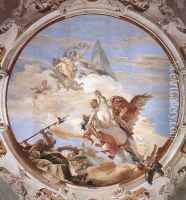Giovanni Battista Tiepolo Paintings
Giovanni Battista Tiepolo, also known as Giambattista Tiepolo, was an Italian painter and printmaker born on March 5, 1696, in Venice. He is particularly famous for his grand, luminous frescoes that embody the final phase of the Rococo movement. Tiepolo's work was characterized by its use of light and airy colors, dynamic compositions, and elegant figures, which often conveyed a sense of theatricality and drama.
Tiepolo was trained in the workshop of Gregorio Lazzarini but was also influenced by the works of other Venetian masters such as Giovanni Battista Piazzetta and Sebastiano Ricci. His early works were mainly religious commissions for churches in Venice, where he began to develop his distinctive style. His reputation grew quickly, and he received commissions from important churches and palaces across Italy.
In 1730, Tiepolo completed one of his masterpieces, the fresco cycle in the Archbishop's Palace in Udine, which established him as one of the leading fresco painters in Northern Italy. His fame spread beyond Italy, and in 1750, he was invited to Würzburg, Germany, to paint the ceiling frescoes in the New Residence palace. This project, completed in 1753, is considered one of the pinnacles of his career and a significant example of European fresco painting.
Tiepolo's success continued with commissions in Milan, where he painted the ceiling of the Palazzo Clerici, and in Madrid, where King Charles III of Spain invited him to create frescoes for the Royal Palace. Despite his international fame, he remained deeply connected to the Venetian artistic tradition.
Giovanni Battista Tiepolo passed away on March 27, 1770, in Madrid. He left behind a legacy as one of the greatest painters of the 18th century, with his work influencing the development of later styles such as Neoclassicism and Romanticism. His sons, Domenico and Lorenzo Tiepolo, were also accomplished painters who continued their father's artistic tradition.
